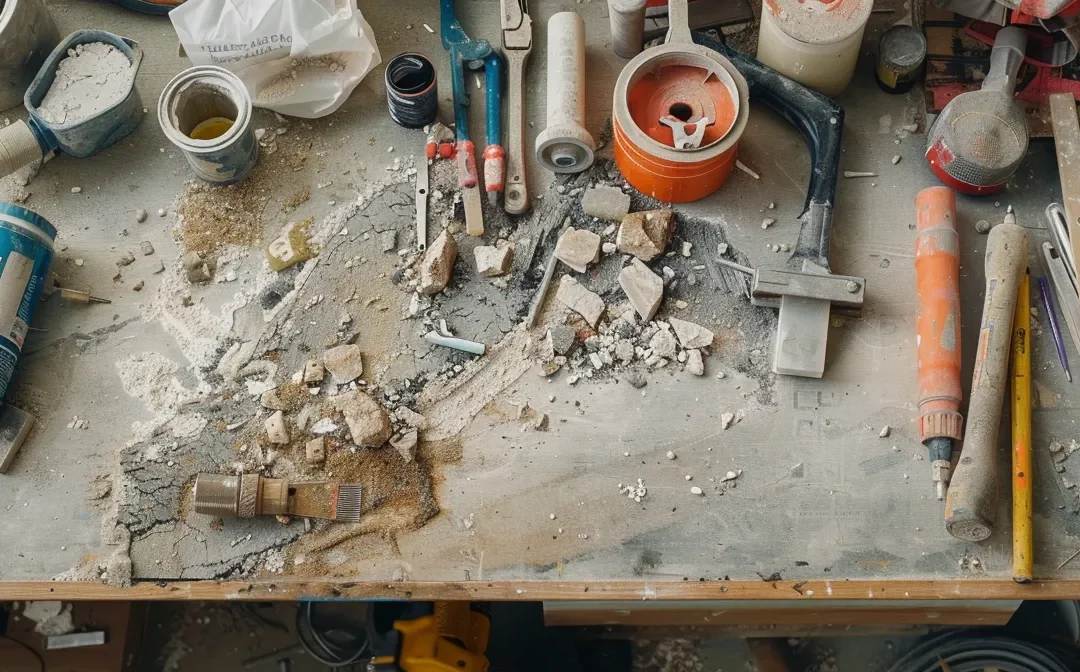Table Of Contents:
- Key Takeaways
- Understanding the Basics of Benchtop Resurfacing Costs
- Comparing Resurfacing to Replacement Expenses
- Calculating the Total Cost of Your Resurfacing Project
- Tips to Reduce Benchtop Resurfacing Costs
- Planning and Budgeting for Resurfacing Projects
- Ensuring Quality While Staying Within Budget
- Conclusion
Are you considering benchtop resurfacing but worried about the costs? Many homeowners believe that replacing kitchen surfaces, like those made of plastic or particle board, is the only option. In this post, you will learn the basics of resurfacing costs, how it compares to full replacement expenses, and tips for budgeting effectively. By understanding these elements, you can make informed decisions that save you money while enhancing your cabinetry and overall kitchen design. Let’s tackle the common pain points and help you navigate the average costs of your resurfacing project.
Key Takeaways
- materials significantly influence the overall cost of benchtop resurfacing projects
- resurfacing is generally more affordable than complete replacements for kitchens and bathrooms
- plan for a contingency fund to cover unexpected costs during the resurfacing process
- choose durable materials to enhance longevity and reduce maintenance needs over time
- scheduling projects during off-peak seasons can lead to lower costs and better contractor availability
Understanding the Basics of Benchtop Resurfacing Costs
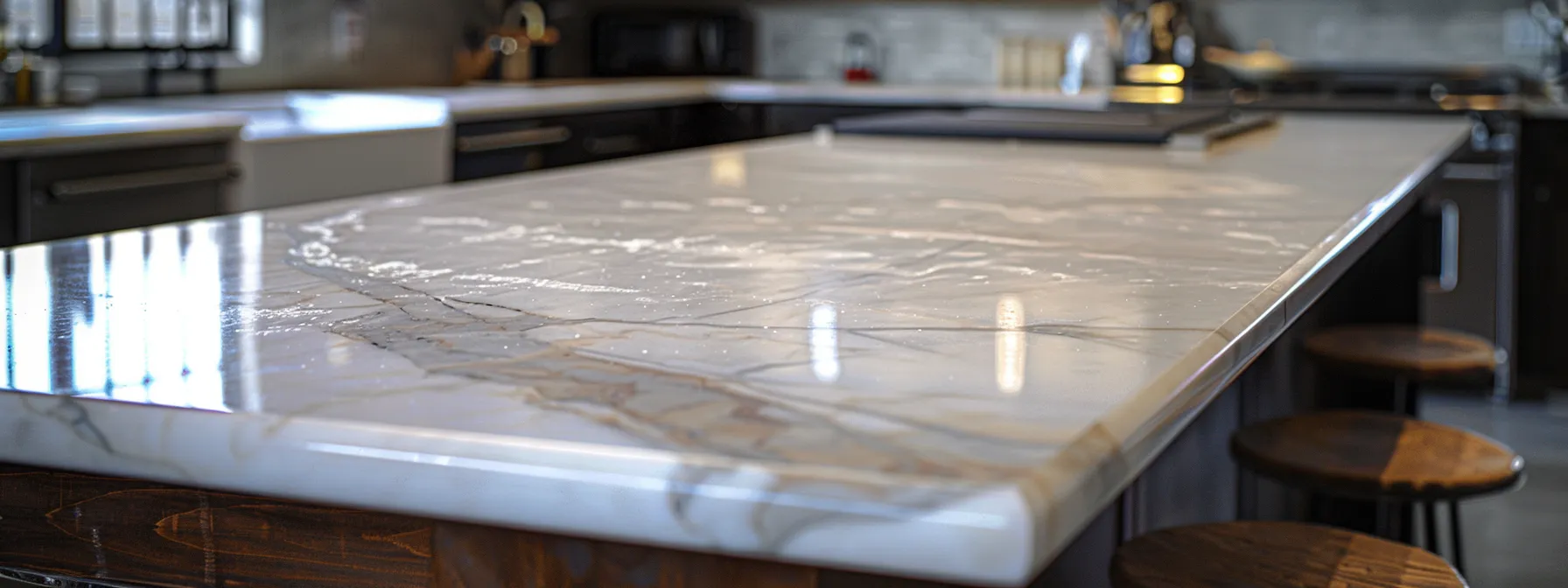
Several factors affect the pricing of benchtop resurfacing, such as the size and type of surface, whether it’s a bathroom or kitchen remodel, and specific materials used. You will explore various resurfacing materials including options for cooktops and butcher block surfaces. Understanding these elements can help you make informed decisions for your project.
Identify Factors That Affect Pricing
When considering benchtop resurfacing, one of the primary factors that can affect pricing is the type of material you choose. For instance, solid wood surfaces offer a warm and classic appearance, but they may come at a higher cost than more common options FIMAGINE Home Page. On the other hand, surfaces such as granite or soapstone present both durability and aesthetic appeal, which can significantly influence your budget as well.
The size and layout of your surfacing area also play an essential role in determining costs. Larger benchtops require more material and labor, which can increase the overall price. Additionally, if you have complex features such as a sink or integrated cooktop, this can further elevate costs due to the additional workmanship involved in achieving a seamless finish.
Finally, your choice of a resurfacing method can impact the overall cost. Some options prioritize environmental friendliness and may use eco-friendly materials, which can be a consideration if sustainability is important to you. However, these choices often come with varying price points, so weighing the environmental benefits against your budget is crucial for making an informed decision.
Explore Different Resurfacing Materials
When considering resurfacing your benchtops, you have a range of materials to choose from, each with its own characteristics and benefits. Solid surface materials are a popular choice because they offer a seamless and sleek appearance. They also come in various colors and brands, allowing you to select a pigment that complements your kitchen or pantry design perfectly.
Another option is tile, which provides versatility and aesthetics. Tiles come in countless designs and sizes, enabling you to create unique patterns that enhance your space. Although tile surfaces can require more maintenance than solid surfaces, their ability to withstand heat and moisture makes them a practical choice for kitchens and bathrooms alike.
For those seeking a warmer, more natural look, wood resurfacing is an excellent solution. Solid wood adds a classic and inviting touch to any area, particularly in a pantry setting. However, it’s essential to consider the brand and quality of wood, as these can significantly influence not just durability but also costs associated with resurfacing.
Resurfacing costs can seem steep, but they often pale in comparison to full replacement expenses. Let’s look closely at how resurfacing stacks up against the more costly option of replacement.
Comparing Resurfacing to Replacement Expenses
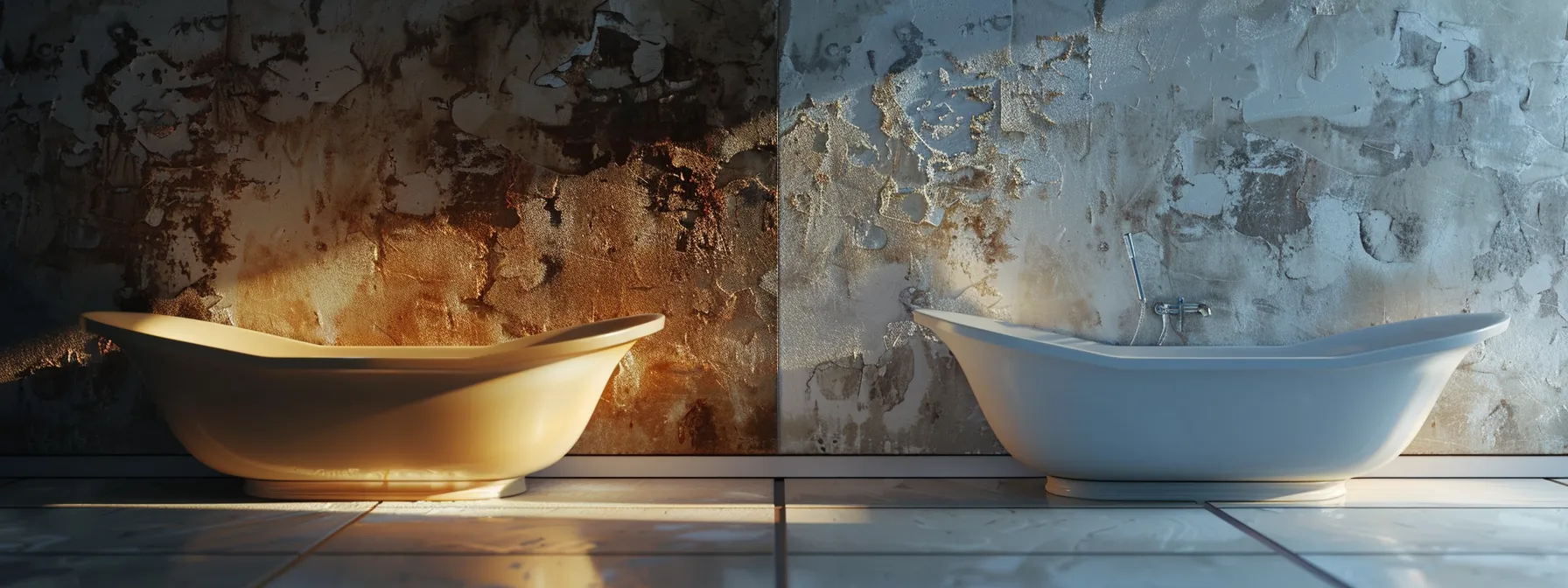
When evaluating the costs of benchtop resurfacing versus replacement, it’s important to analyze cost differences between options. Resurfacing can be significantly cheaper than tearing out and replacing materials like a bathtub or porcelain surfaces. Additionally, consider longevity and maintenance costs—using materials like resin may reduce long-term expenses compared to traditional replacements, making resurfacing an attractive option.
Analyze Cost Differences Between Options
When you weigh resurfacing against replacement, the financial implications can be significant. Resurfacing is generally more affordable than a full renovation, making it a sensible choice for those on a tighter budget. Instead of investing in new materials, you can opt for resurfacing solutions like wood veneer, which can dramatically enhance your kitchen or bathroom’s appearance without incurring the high costs associated with complete replacements.
Consider the installation process as well. Replacing surfaces often involves removing existing materials and can disrupt plumbing fixtures, leading to additional labor costs and potential accessibility challenges. In contrast, resurfacing allows for minimal disruption to your space while providing a fresh and updated look. This makes it an efficient option, especially for busy households.
Finally, think about the long-term benefits. Using durable materials such as plywood in resurfacing can extend the lifespan of your surfaces while reducing maintenance expenses. You can enjoy a refreshed aesthetic without worrying about daily wear and tear, making resurfacing a smart investment. When evaluating your options, prioritize both initial costs and future savings:
- Affordability of resurfacing materials like wood veneer
- Minimized disruption during installation
- Long-term durability with materials like plywood
Consider Longevity and Maintenance Costs
When considering the costs of benchtop resurfacing, you must think about longevity. High-quality resurfacing materials, such as thermofoil or solid surface options, can withstand daily wear and tear, making them a durable choice for kitchens and bathrooms. This longevity reduces the frequency of repairs and replacements, ultimately saving you money over time.
Maintenance costs also play an essential role in your decision-making process. Resurfaced surfaces often require less upkeep than traditional materials, allowing for easier cleaning and improved usability. For example, if you choose a resurfaced shower area, you might find that it stays looking new longer than older, porous materials that trap stains and grime.
Additionally, the type of material you select will impact both longevity and maintenance needs. Surfaces designed for high traffic areas, like kitchens and bathrooms, are crucial. Investing in resurfacing solutions means you’re choosing materials that balance aesthetic appeal with practical usage, ensuring your space remains functional and beautiful for years to come.
Understanding the difference in costs makes the decision clearer. Now, let’s break down how to calculate the total expense of your resurfacing project.
Calculating the Total Cost of Your Resurfacing Project
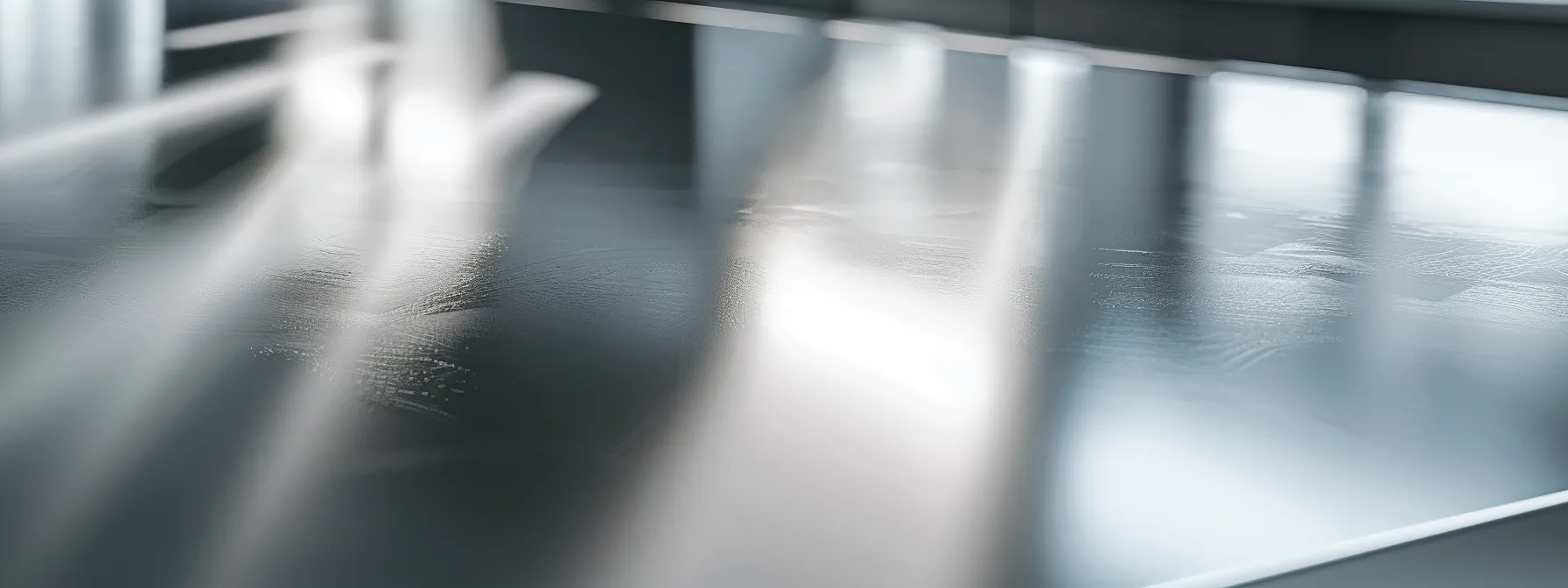
To accurately calculate the total cost of your resurfacing project, start by estimating labor and material expenses, which includes factors like epoxy finishes and the choice of materials such as stainless steel. Additionally, be aware of potential extra fees and taxes that may arise, ensuring you account for all costs before making a decision. Understanding these elements will help you make informed choices for your kitchen or bathroom resurfacing needs.
Estimate Labor and Material Expenses
Estimating labor and material expenses for your benchtop resurfacing project is essential for budgeting effectively. First, measure the length of the surface area you wish to resurface, as this will directly impact material costs. If you plan to use high-quality materials like Caesarstone, it’s important to factor in the premium prices of these options, as they can provide both beauty and durability for your space.
Labor costs can also vary based on the complexity of your project. If your resurfacing involves intricate features like crown molding or additional details, such as creating a smooth transition around sinks or edges, you may incur higher labor expenses. Always communicate clearly with your contractor to get an accurate quote that encompasses all elements, ensuring no surprise charges arise later in the process.
To break down your costs effectively, consider creating a checklist of expenses you might encounter during the resurfacing process:
- Material costs (e.g., Caesarstone)
- Labor rates based on complexity
- Extra fees for specialized techniques (like crown molding)
- Estimated waste or excess materials (allow for extra due to potential stains or imperfections)
Include Additional Fees and Taxes
When budgeting for your benchtop resurfacing project, it’s important to account for additional fees and taxes that may arise. Various home improvement projects, including resurfacing, can incur unexpected costs beyond just materials and labor. For instance, permits may be required depending on your local regulations, particularly if you are using materials such as marble that have specific installation guidelines. Be sure to ask your contractor about potential fees that could impact your overall budget.
Another aspect to consider is the cost of living in your area, as it often affects labor rates and material prices. HomeAdvisor provides a useful resource for estimating these costs, allowing homeowners to plan effectively. If you’re in a region with a higher cost of living, be prepared for increased labor expenses and possibly other added fees that may go beyond the initial estimates you receive.
Lastly, it’s wise to include a contingency fund in your budget. This fund can cover any unexpected fees that may arise during the project, providing peace of mind that all aspects are financially controlled. A good rule of thumb is to set aside around 10-15% of your total budget for such instances, ensuring you can navigate any surprises without financial strain.
You’ve seen the numbers. Now it’s time to save a few. Here are some simple tips to help you lower your benchtop resurfacing costs without sacrificing quality.
Tips to Reduce Benchtop Resurfacing Costs
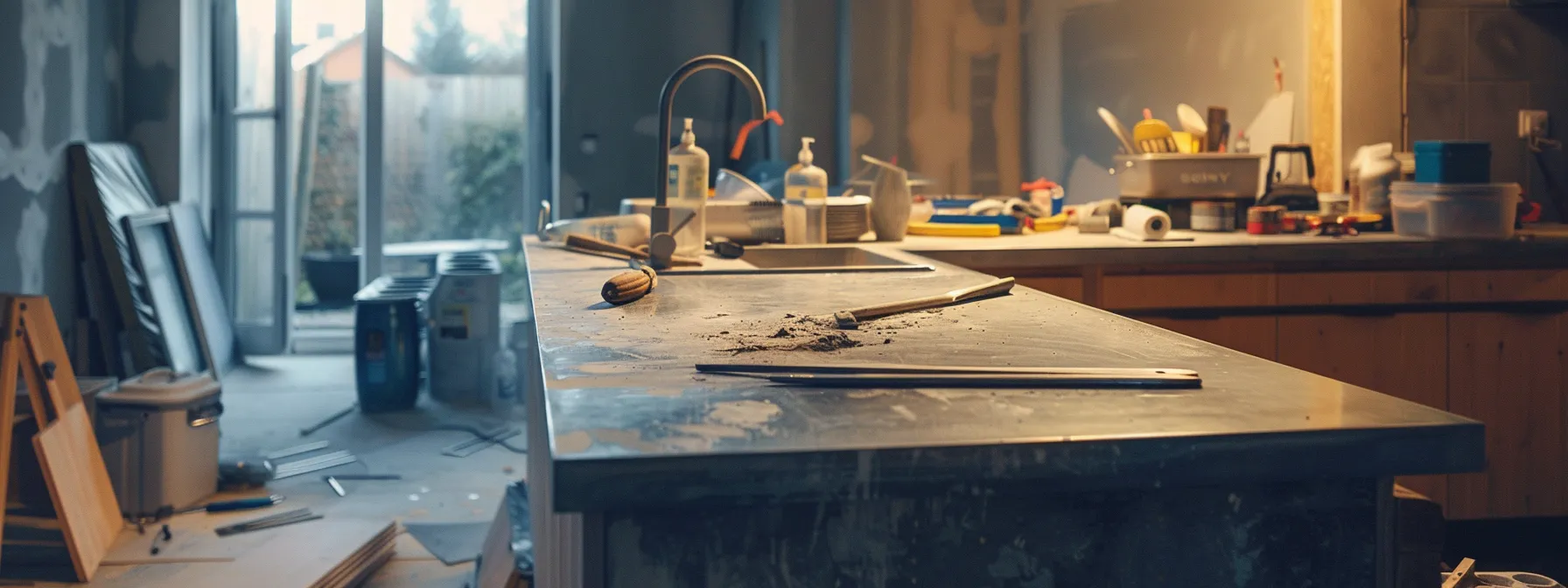
To reduce costs for your kitchen remodel while ensuring quality, start by selecting cost-effective materials that withstand wear and tear, such as durable steel options. Additionally, finding reliable contractors who offer competitive rates can help you achieve a successful makeover without overspending. These strategies will allow you to navigate the price of resurfacing effectively while maintaining the aesthetics of your space.
Choose Cost-Effective Materials Without Sacrificing Quality
When selecting materials for your benchtop resurfacing project, consider focusing on budget-friendly options that still offer quality and durability. For example, laminate countertops provide a sleek appearance and are more affordable than granite or marble but can effectively enhance your kitchen remodeling efforts. By discussing your preferences with a general contractor, you can ensure you choose materials that meet both your aesthetic and financial needs.
Another effective approach is to look for alternative materials that mimic the look of high-end finishes. Solid surface materials, for instance, can replicate the appearance of stone while being less expensive and easier to maintain. This allows you to achieve the desired look for your countertops without compromising quality or breaking the bank, providing a smart solution for your remodeling project.
Don’t overlook the importance of details such as molding and door finishes when planning your resurfacing project. These elements can significantly enhance the overall look of your kitchen, and opting for cost-effective materials in these areas can keep your project within budget. Your general contractor can guide you in selecting materials that complement your new countertops, ensuring a cohesive and appealing design throughout your space.
Find Reliable Contractors Offering Competitive Rates
Finding reliable contractors is crucial for your benchtop resurfacing project. Look for professionals who are well-versed in local building code requirements, ensuring that all work adheres to safety and regulatory standards. Experienced contractors will understand the complexity involved in resurfacing and can provide insights on the best practices for materials and craftsmanship, reducing the likelihood of future issues.
In your search for contractors, consider their experience in woodworking and manufacturing techniques specific to resurfacing. A contractor with a solid background will not only offer quality workmanship but can also help assess whether you need to replace any underlying components of your benchtop for optimal results. This expertise ensures that your project runs smoothly and that your budget remains intact.
Don’t hesitate to compare quotes from multiple contractors. This will help you gauge competitive rates in your area while also giving you a chance to ask for recommendations or examine past projects. Understand that the lowest price may not always mean the best value, so weigh their experience and customer feedback alongside the costs to make an informed decision.
You’ve learned how to cut costs on resurfacing. Now, it’s time to plan wisely and set your budget for the project ahead.
Planning and Budgeting for Resurfacing Projects
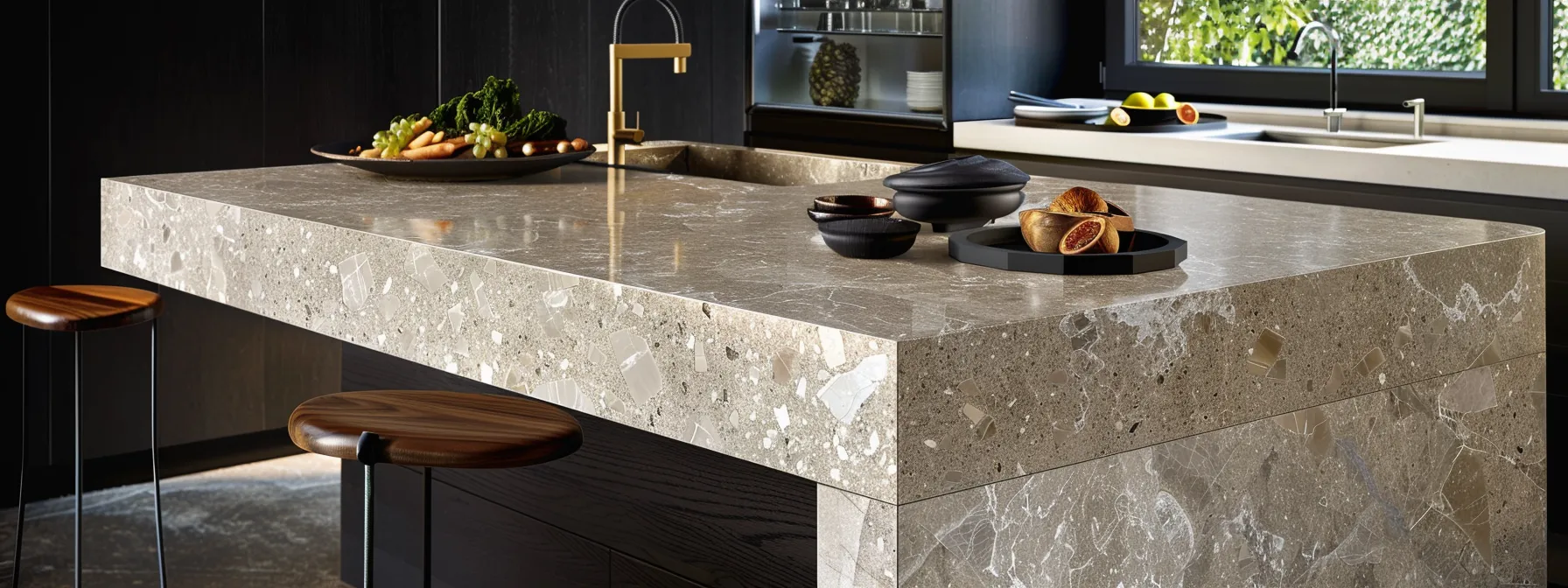
Set a realistic budget based on your needs, particularly when planning for kitchen cabinet resurfacing. Consider the expense of materials like quartz and finishes to achieve the desired look. It’s also essential to allocate funds for unexpected expenses that can arise during construction, ensuring you remain financially prepared throughout your project.
By addressing these factors, you can confidently navigate your resurfacing costs and make informed decisions about coatings and aesthetics, ultimately leading to a successful kitchen transformation.
Set a Realistic Budget Based on Your Needs
When setting a realistic budget for your resurfacing project, it’s essential to evaluate your specific needs and preferences. Consider the materials you want to use, such as wood or Corian, as these will significantly impact your overall costs. Ensure you account for the wear associated with different surfaces, as materials with lower durability may require more frequent maintenance or replacements, adding to your expenses over time.
Think about the existing elements in your space that you plan to retain during the resurfacing process. If you’re considering bathtub refinishing alongside your benchtop project, it’s beneficial to bundle these services with the same contractor. This can often lead to savings as contractors appreciate the opportunity to complete multiple tasks at once, providing a more comprehensive pricing structure for your project.
Your budget should also include the potential cost of additional items, like a cutting board, that complement your resurfaced surfaces. Prioritizing quality in these added components will enhance the longevity and functionality of your space. By planning for these factors, you empower yourself to make informed decisions that align with both your aesthetic goals and your financial capabilities.
Allocate Funds for Unexpected Expenses
When budgeting for your benchtop resurfacing project, it’s vital to allocate funds for unexpected expenses that may arise. Projects can encounter issues such as hidden damage beneath your existing surfaces or complications related to the porosity of the materials you select, like ceramic or engineered stone. Setting aside a contingency fund—typically around 10-15% of your total budget—ensures you remain prepared for these surprises, allowing you to maintain control over your project regardless of challenges that might emerge.
Consider how unexpected requirements can impact both timelines and costs. For example, if your resurfacing reveals underlying wear that needs addressing before refinishing, it can substantially influence your overall return on investment. By planning for such scenarios, you not only safeguard your project but also enhance the longevity and durability of the resurfaced areas, ultimately benefiting both your Bathrooms and Kitchens.
In addition to structural surprises, account for potential changes in material costs during your project. As you may choose specific finishes or colors that you hadn’t planned on initially, this flexibility can lead to increased expenses. Factoring in these fluctuations will help ensure that your resurfacing remains within budget without sacrificing quality or aesthetic appeal, fostering a successful transformation that meets your expectations.
You’ve laid the groundwork for your project and set your budget. Now, let’s focus on making every dollar count while ensuring the quality you deserve.
Ensuring Quality While Staying Within Budget
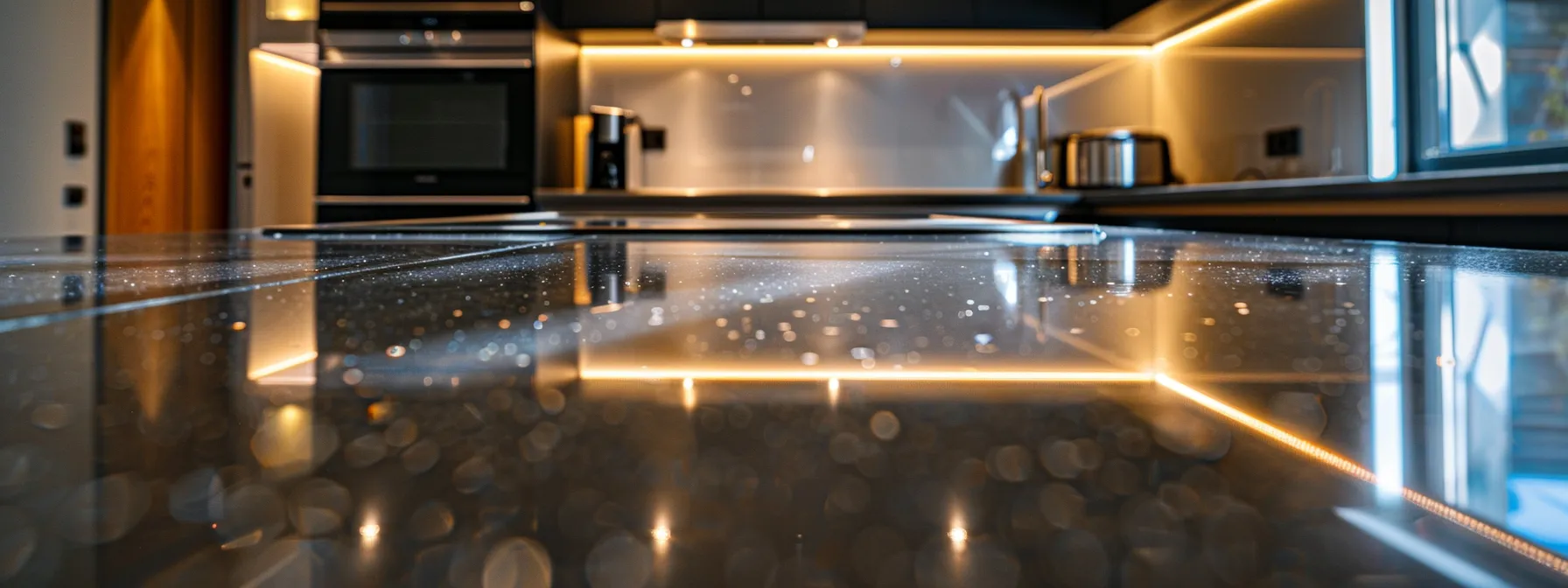
Prioritizing essential features over extras can help you focus on what truly matters in your benchtop resurfacing project. By scheduling your project during off-peak seasons, you may also benefit from lower rates and increased availability of contractors. These strategies ensure that you maintain quality while staying within your budget, enabling a successful renovation that enhances your space.
Prioritize Essential Features Over Extras
When planning your benchtop resurfacing project, it’s important to focus on the core features that will enhance functionality and aesthetics. Prioritizing essential elements, like choosing durable materials, ensures that you invest your budget wisely. High-quality resurfacing can elevate your kitchen or bathroom without the need for costly extras.
Consider your daily needs and how your benchtop will be used. Features such as heat resistance and easy maintenance should take precedence over design embellishments that may add minimal value. This approach allows you to create a practical and attractive space while staying within your financial limits.
Moreover, eliminating non-essential extras doesn’t mean sacrificing style. You can achieve a refined look using less expensive materials without compromising quality. By focusing on the essentials, you can optimize your resurfacing project, leading to a successful transformation of your space:
- Identify essential features that enhance usability.
- Choose durable materials with long-term benefits.
- Eliminate unnecessary embellishments to save costs.
Schedule the Project During Off-Peak Seasons
Scheduling your benchtop resurfacing project during off-peak seasons can lead to significant cost savings. Most contractors experience a lull in demand during certain times of the year, resulting in lower labor rates and increased availability. By planning your project during these periods, you can not only secure better pricing but also ensure that your needs receive the attention they deserve without rush or delays.
In addition to financial benefits, taking on your resurfacing project at a less busy time allows for flexibility in the scheduling process. You can work closely with your contractor to establish a timeline that fits your overall project goals. This collaboration can lead to enhanced workmanship, as contractors often have more time to focus on each individual job when they are not managing multiple projects simultaneously.
Lastly, choosing to resurface your benchtops during off-peak times can help you avoid the common pitfalls that can arise from time constraints. High demand can lead to rushed decisions or compromises on quality due to tight schedules. By giving yourself ample time and choosing a season that works for both you and your contractor, you can ensure a high-quality finish that meets your expectations and enhances the overall look of your kitchen or bathroom space.
Conclusion
Navigating the costs of benchtop resurfacing is essential for making informed decisions that balance quality and budget. Understanding factors like material choices, labor expenses, and potential extra fees allows you to plan effectively and prevent unexpected financial strain. By prioritizing durable materials and essential features, you can achieve a refreshed aesthetic without overspending. Your approach to resurfacing can transform your kitchen or bathroom, ensuring long-lasting beauty and functionality.
